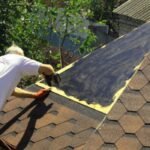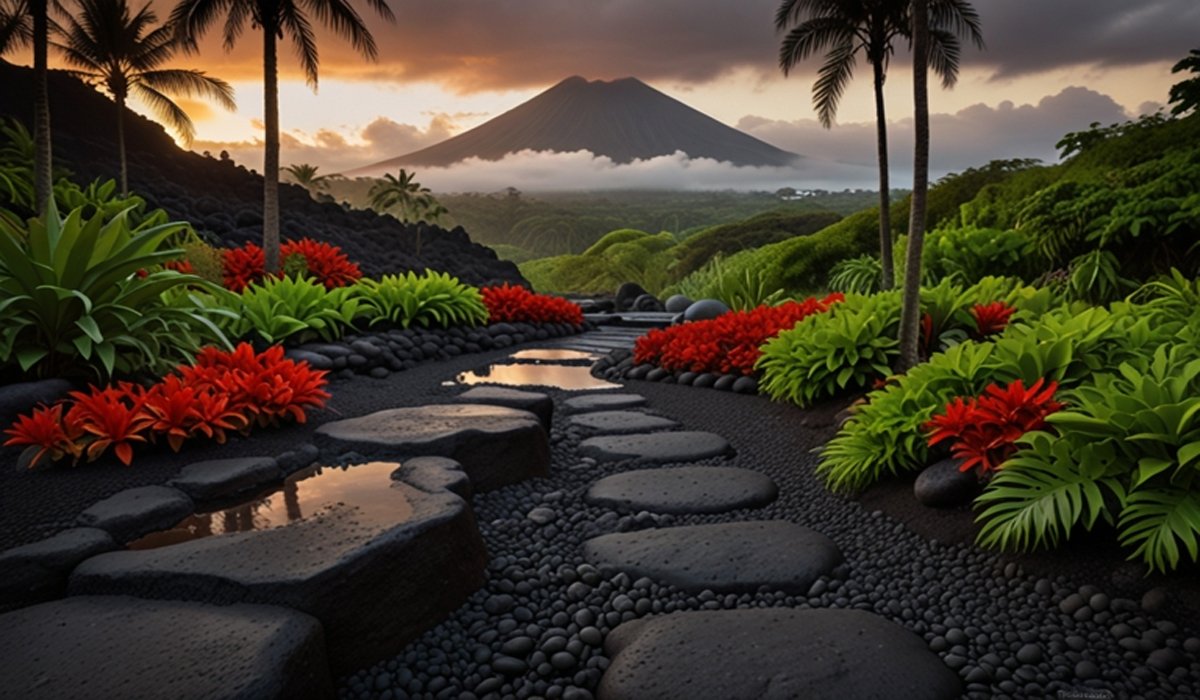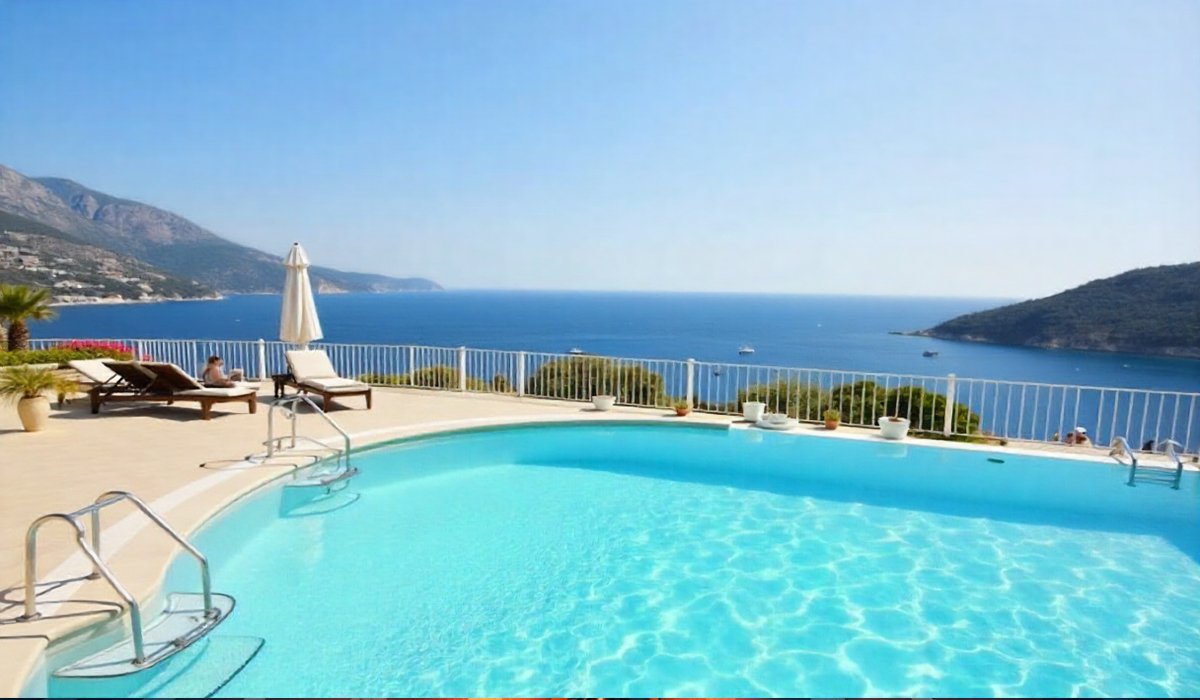Imagine this: You step onto your private terrace, morning coffee in hand. Before you, a stunning oasis unfolds – vibrant tropical blooms bursting from jet-black volcanic rock, steam gently curling from hidden thermal vents, and the silhouette of a majestic volcano framing it all. This isn’t a fantasy; it’s the breathtaking reality of a Vulcano Hotel Garden. Intrigued? You should be! This guide is your passport to creating this unique, dramatic, and utterly captivating garden style, whether you manage a boutique hotel or simply crave a slice of volcanic paradise at home.
Forget cookie-cutter landscapes. A Vulcano Hotel Garden is about embracing raw power and delicate beauty in perfect harmony. It’s about harnessing the primal energy of the earth to create a space that soothes the soul and sparks the imagination. Ready to transform your patch of earth into something truly extraordinary? Let’s dive into the lava!
What Exactly Is a Vulcano Hotel Garden? (Beyond Just Rocks!)
Think of it less as a strict design rulebook and more as channeling a powerful feeling inspired by volcanic landscapes. It’s the art of recreating the dramatic textures, unique plant life, and atmospheric elements found near volcanoes in a designed garden space, often associated with luxury resorts in volcanic regions like Hawaii, Iceland, Costa Rica, or the Aeolian Islands (home to the actual Vulcano island!).
Core Ingredients of the Magic:
- Volcanic Rock: The undeniable star. Think porous black lava rock (aʻa or pāhoehoe), rugged basalt boulders, or lightweight pumice. This isn’t just mulch; it’s structural, textural, and symbolic.
- Heat-Loving & Dramatic Plants: Plants that thrive in mineral-rich, often well-draining volcanic soil and embrace the drama – think bold foliage (elephant ears, bromeliads), fiery blooms (heliconia, torch ginger), resilient succulents (agaves, aeoniums), and hardy natives.
- Water Elements: Symbolizing both the ocean surrounding volcanic islands and the contrast to fire. This could be serene reflecting pools, naturalistic streams, modern water walls, or even thermal hot springs if you’re incredibly lucky with your location!
- Texture & Contrast: The interplay of rough, jagged rock against smooth, glossy leaves; dark stone against bright flowers; the starkness of lava fields softened by lush ferns.
- Atmosphere: Evoking a sense of mystery, power, and serene isolation. Strategic lighting (warm glows mimicking lava), steam features (if feasible), and secluded seating nooks enhance this.
Why Go Volcanic? The Irresistible Allure
Why are Vulcano Hotel Gardens so sought after? It’s not just about looks (though they are stunning!):
- Unbeatable Drama & Visual Impact: Instantly creates a unique, memorable, and photogenic environment. Guests (or you!) won’t forget it.
- Natural Resilience: Volcanic rock is incredibly durable. Plants suited to these conditions are often tough, drought-tolerant once established, and resistant to wind.
- Low(er) Maintenance Potential: Choosing the right native or adapted plants significantly reduces water needs and fuss compared to thirsty lawns or high-maintenance exotics. The rock itself suppresses weeds.
- Thermal Benefits: Lava rock absorbs heat during the day and releases it slowly at night, creating warmer microclimates – perfect for tropical plants or extending the evening enjoyment of a terrace.
- Connection to Place: If you’re in a volcanic region, it grounds your property authentically in its geology. If you’re not, it transports you to those dramatic landscapes.
- Sustainability: Utilizing local volcanic rock reduces transport emissions. Drought-tolerant planting conserves water. It’s a style that can be very eco-conscious.
Building Your Volcanic Paradise: Key Design Elements
Creating your Vulcano Hotel Garden is like sculpting with nature. Focus on these core elements:
- The Foundation: Rocks & Hardscaping:
- Source: Use local volcanic rock whenever possible for authenticity and lower environmental impact. Quarries or landscape suppliers in volcanic regions are key.
- Types & Uses:
- Large Boulders: Anchor points, focal features, natural seating. Place them as if they erupted there naturally!
- Lava Rock (Crushed or Chunks): The iconic mulch. Excellent for pathways, filling beds, creating contrast. Its porosity aids drainage.
- Pumice: Lightweight, great for amending soil in pots or raised beds for drainage.
- Basalt Columns: For a truly dramatic, almost architectural statement (think Iceland’s Reynisfjara beach).
- Hardscaping: Paths of crushed lava rock, basalt pavers, or dark gravel reinforce the theme. Consider dark stained concrete or charcoal-hued tiles for terraces.
- The Lifeblood: Plant Selection:
- Embrace Structure & Form: Use sculptural plants as living sculptures. Agaves, yuccas, dragon trees (Dracaena), and Cordylines offer strong vertical lines.
- Go Bold with Foliage: Elephant ears (Alocasia, Colocasia), giant bird of paradise (Strelitzia nicolai), Philodendrons with large leaves create that lush, tropical feel against the dark rock.
- Fiery & Exotic Blooms: Introduce color with Heliconia, Gingers (Alpinia, Hedychium), Bromeliads (especially the vibrantly colored ones like Neoregelia or Aechmea), Hibiscus, and Bougainvillea.
- Succulent Power: Agaves, Aeoniums (especially dark varieties like ‘Zwartkop’), Aloes, Echeverias, and Sedums thrive in the well-draining conditions and add fascinating textures.
- Ferns & Softeners: Contrast the hard rock with the softness of ferns (Rabbit’s Foot, Maidenhair, Bird’s Nest Ferns) or grasses (Mondo grass, Lomandra).
- Native & Adapted is Best: Research plants naturally found in volcanic areas near you. They’ll be happiest and require the least intervention. Think Ohia Lehua in Hawaii, Echiums in the Canaries.
- Popular Vulcano Garden Plants Table:
| Plant Name | Type | Key Feature | Why It Works |
| Agave | Succulent | Dramatic rosettes, architectural | Thrives in sun, poor soil, drought-tolerant |
| Aeonium ‘Zwartkop’ | Succulent | Deep purple-black rosettes | Striking contrast, loves drainage |
| Elephant Ear (Alocasia/Colocasia) | Tropical | Huge, heart-shaped leaves | Creates instant lushness, tropical vibe |
| Bird of Paradise (Strelitzia) | Tropical | Bold foliage, exotic flowers | Iconic tropical structure |
| Heliconia | Tropical | Vibrant, claw-like flower bracts | Fiery color, dramatic presence |
| Bromeliad | Epiphyte/Tropical | Colorful foliage & unique flowers | Adaptable, add pops of color, low-maintenance |
| Fern (e.g., Asparagus, Bird’s Nest) | Foliage | Soft, delicate fronds | Softens rocks, adds moisture feel |
| Cordyline (Ti Plant) | Tropical | Colorful, strap-like leaves (reds/purples) | Vertical accent, vibrant color |
| Lomandra Grasses | Ornamental Grass | Fine-textured, flowing tufts | Movement, softness, drought-tolerant |
Water & Fire: Essential Elements:- Water Features: A must! A simple dark basalt bowl as a birdbath, a reflecting pool mirroring the sky and foliage, a naturalistic stream winding through rocks, or a sleek water wall adding sound and movement. Water cools the volcanic imagery and attracts life.
- Fire Features (Optional but Atmospheric): Fire pits crafted from lava rock, modern gas fire tables, or even torches. They literally bring the “fire” of the volcano, extending usability into cooler evenings and enhancing the primal atmosphere. Safety first, especially with real lava rock!
- Steam/Vapor (Advanced/Geothermal): If you have access to natural geothermal heat, incorporating safe, controlled steam vents is the ultimate atmospheric touch (like the Blue Lagoon in Iceland). For others, subtle misting systems can evoke a similar feel on a hot day.
- Setting the Mood: Lighting & Atmosphere:
- Warm Glows: Use low-voltage LED lights with warm color temperatures (2700K-3000K). Uplight dramatic boulders or trees. Path lights should be subtle, perhaps recessed into lava rock paths.
- Strategic Shadows: Lighting isn’t just about illumination; it’s about creating mystery. Allow some areas to remain darker, highlighting key features.
- Secluded Nooks: Create intimate seating areas nestled amongst rocks and plants – a bench under a tree, a daybed surrounded by foliage. This enhances the feeling of discovery and retreat.
Read also: Fort Lauderdale Florida Verenigde Staten: Where Venice Meets the Tropics
Planting & Maintaining Your Volcanic Eden
Planting in the “Lava”:
- Soil Prep is Key: While volcanic rock is mineral-rich, it’s often not soil. Most plants need some organic matter. Create planting pockets: dig a hole 2-3 times wider than the root ball, mix the excavated mineral soil with generous amounts of compost or well-rotted manure (aim for 30-50% organic matter). This improves moisture retention and nutrients while maintaining good drainage.
- Drainage is Non-Negotiable: Amend heavy clay soils significantly with pumice, grit, or lava sand to prevent waterlogging, which is fatal to most volcanic garden plants. Raised beds are a great solution if natural soil is poor.
- Mulch Magic: After planting, cover the soil surface with 2-3 inches of lava rock mulch. This suppresses weeds, retains moisture, regulates soil temperature, and looks perfect.
Keeping the Volcano Tamed (Maintenance):
- Watering Wisdom: Deep but infrequent watering is best. Establish plants are often drought-tolerant. Overwatering is a bigger enemy than underwatering for most species. Monitor carefully, especially during establishment and extreme heat. Drip irrigation under the mulch is highly efficient.
- Feeding: Go light! Volcanic soils are naturally fertile. Use a slow-release, balanced organic fertilizer sparingly in spring, or top-dress with compost. Avoid high-nitrogen feeds that promote weak, leggy growth.
- Pruning: Prune for shape, remove dead or damaged material, and control size. Many structural plants (agaves, yuccas) need minimal pruning. Tropicals like Heliconia may need old stems cut back.
- Weed Control: The lava rock mulch does wonders, but occasional weeds will appear. Hand-pull them early before they establish. Avoid herbicides near desirable plants.
Inspiration from the Masters: Real Vulcano Hotel Gardens
Seeing is believing! Here’s how top resorts nail the Vulcano Hotel Garden aesthetic:
- Four Seasons Hualalai (Hawaii): A masterclass in luxury meets lava. Immaculate greenswards meet ancient black lava flows. Palm-fringed pools seem carved from the rock. Native Hawaiian plants like Naupaka and Pohinahina are woven throughout. It’s seamless, elegant, and deeply connected to the aīna (land).
- Hotel Silversands Grenada: While Grenada isn’t volcanic, Silversands uses dark stone (basalt/gabbro) extensively in its hardscaping. Long linear pools reflect the sky, flanked by minimalist planting – sculptural palms, agaves, and clipped hedges – creating a modern, almost volcanic-terrace feel against the Caribbean blue.
- Therme Vals (Switzerland): Though focused on thermal baths, its integration with the Alpine landscape uses local stone massively. The concrete structures echo the surrounding geology, and the minimalist planting complements the raw, powerful setting – a different take on the “volcanic” power of place.
- Boutique Hotels in Santorini (Greece): Famous for their white Cycladic architecture cascading down the volcanic caldera cliffs. Their gardens are often terraced, using local volcanic pumice and stone, featuring hardy succulents, bougainvillea spilling over walls, and small plunge pools – maximizing the jaw-dropping views of the Aegean Sea born from volcanic fury.
Debunking Volcanic Garden Myths
- Myth 1: “Volcanic soil is barren.” FALSE! Fresh volcanic ash can be challenging initially, but weathered volcanic rock breaks down into incredibly mineral-rich soil (think Hawaii’s fertile slopes). We just need to help it retain moisture and organic matter for garden plants.
- Myth 2: “Only cacti survive.” FALSE! While succulents excel, a vast array of lush tropicals, dramatic foliage plants, and vibrant flowers thrive in the well-draining, mineral-rich conditions when properly planted.
- Myth 3: “It’s too expensive.” It can be an investment, especially in large rocks and sourcing materials. However, using local rock reduces transport costs. Choosing low-maintenance, drought-tolerant plants saves significantly on water and long-term care costs compared to traditional landscapes. Start small – a feature corner can be transformative.
- Myth 4: “Too harsh for a relaxing space.” ABSOLUTELY FALSE! The contrast of hard rock with soft foliage and water, the warm lighting, the secluded nooks – it creates a uniquely powerful yet deeply serene atmosphere. It’s about primal energy meeting peaceful refuge.
Bringing it Home: 5 Practical Tips to Start Your Vulcano Garden
- Start Small & Focus: Don’t try to overhaul everything. Pick one key area – an entrance, a courtyard, a corner of your patio. Create a dramatic focal point with a large boulder and 2-3 striking plants (e.g., a black Aeonium, a red Cordyline, and a soft fern).
- Source Locally: Hunt for local quarries or landscape suppliers selling volcanic rock (lava rock, basalt, scoria). It’s cheaper, more sustainable, and ensures geological authenticity.
- Embrace Containers: Not ready to dig? Create a stunning potted Vulcano Hotel Garden vignette. Use large, dark pots (concrete, ceramic, metal). Plant an Agave, a colorful Bromeliad, and trailing Sedum. Mulch with small lava rock. Perfect for balconies or patios!
- Water is Essential: Even a small water feature makes a huge difference. A simple dark basin, a bubbling urn, or a wall fountain adds the crucial cooling, reflective element.
- Lighting Sets the Stage: Invest in a few warm LED spotlights. Uplight your key boulder or feature plant. You’ll be amazed at how it transforms the space at night into a magical volcanic grotto.
Conclusion: Your Volcanic Oasis Awaits
Creating a Vulcano Hotel Garden is about tapping into the awe-inspiring power and beauty of our planet. It’s a landscape style that’s dramatic yet serene, resilient yet lush, and utterly unforgettable. By embracing volcanic rock, selecting bold and adaptable plants, incorporating water, and crafting atmosphere with light and texture, you can forge a unique sanctuary that transports you to the edge of creation itself.
Whether you’re landscaping a luxury resort or your own backyard retreat, the principles are the same: respect the raw materials, choose plants wisely, add water and warmth, and let the primal beauty shine. Your personal volcanic paradise isn’t just a dream – it’s a very achievable, breathtaking reality. Start planning, start planting, and get ready to be amazed by what grows from the rock!
What’s the first volcanic element you’d incorporate into your garden? Share your dream feature in the comments below!
FAQs About Vulcano Hotel Gardens
- Q: Is lava rock safe to use in my garden?
A: Generally, yes! Commercially sold lava rock for landscaping is weathered and stable. Avoid using freshly collected rock from active volcanic areas due to potential sharp edges or instability. Lava rock doesn’t leach harmful chemicals in a way that affects plants negatively. - Q: Can I create a Vulcano Hotel Garden in a cold climate?
A: Absolutely! Focus on cold-hardy plants that offer the structural drama and texture. Use succulents like Sempervivum (Hens & Chicks), Sedum spectabile, Yucca filamentosa, ornamental grasses, and hardy ferns. Evergreen shrubs with interesting forms work well. Use volcanic rock as mulch and hardscape. Protect tender plants in pots over winter. - Q: How much does a Vulcano Hotel Garden cost?
A: Costs vary hugely. Large boulders and significant hardscaping are the biggest expenses. Using local rock saves money. Plant costs depend on size and rarity. DIYing planting and mulch spreading reduces labor costs. It can range from moderately priced (starting with a small feature) to very high-end for large, complex resort installations. - Q: Do Vulcano Gardens attract pests or snakes?
A: Like any garden, they can. The rock mulch provides hiding spots for insects and potentially small reptiles. Good maintenance (keeping debris clear) helps. Rodents aren’t specifically more attracted. The resilient plants chosen are often less prone to common pest infestations than high-maintenance ornamentals. - Q: What’s the biggest mistake people make when creating one?
A: Neglecting soil preparation and drainage. Simply plopping plants into pure lava rock or heavy clay without amending the soil leads to failure. Ensuring proper drainage and adding organic matter to planting pockets is crucial for plant health. - Q: Can I grow vegetables in a Vulcano Garden?
A: It’s not ideal for traditional vegetable plots. The focus is on ornamental, structural, and drought-tolerant plants. However, you could incorporate herbs like rosemary, thyme, or oregano that thrive in well-drained, sunny spots, or grow veggies in separate raised beds with appropriate soil mix. - Q: How often do I really need to water?
A: It depends entirely on your climate, plants, and soil. The key is deep, infrequent watering to encourage deep roots. Established drought-tolerant plants might only need water every 1-2 weeks in summer, or less. Monitor soil moisture below the mulch layer – water when the top few inches feel dry. Overwatering is a common killer.
You may also like: Luxury Villas Italy Le Collectionist: The Ultimate Experience of La Dolce Vita











